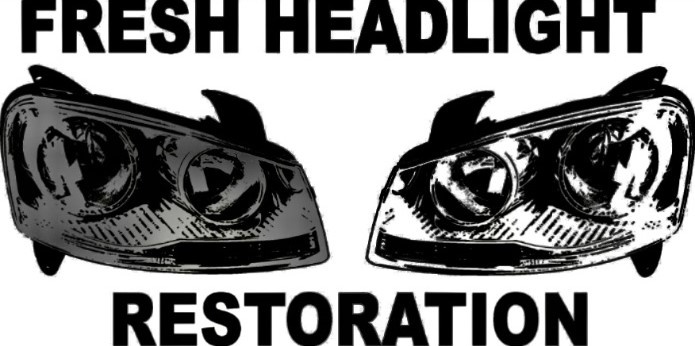When most people think of headlight maintenance, what first comes to mind is changing bulbs when they burn out. However, as a vehicle ages another culprit can strike: foggy headlights. With the average age of vehicles on the road growing to more than 11 years, cleaning up that fogginess (also known as headlight restoration) when it strikes is an important maintenance item for safety.
With cars, this loss of “vision” manifests as an aging process on headlight lenses that’s similar to cataracts: The lenses that commonly cover headlight bulbs are made of plastic and become cloudy and hazy over time, reducing the amount of light illuminating the road.
Cars that spend most of their life parked outdoors, where sunlight, oxidation, UV rays and air pollution take a toll on headlight lenses, are most susceptible to this aging process. Unlike bulbs that simply get replaced when they burn out, the lenses are permanent fixtures that usually don’t get replaced unless they’re damaged in an accident — or when owners realize they can’t see at night because they’re so clouded.
New bulbs might restore some headlight brightness, bulbs can dim with age as well. But clouded lenses that aren’t restored will continue to reduce headlight effectiveness, potentially causing safety issues in nighttime driving and low-visibility conditions. In addition, despite the claims of bulb manufacturers, high-priced replacement bulbs might be brighter, but they don’t necessarily illuminate more of the road than original-equipment bulbs and usually don’t last as long.
Clouded lenses can’t be simply cleaned with soap and water; they are cloudy because the plastic itself has been discolored and not just the surface. There are a few different ways you can try to remove the fogginess at home. A do-it-yourself type of solution involves toothpaste: Place toothpaste in a cloth, wipe it on the affected areas in small circles to buff out the discoloration. But this isn’t always effective and if your headlights are very cloudy, more drastic measures must be taken.
There are a variety of headlight restoration kits are available for you to try and clean up the fogginess yourself. The kits typically require a multistep process of sanding the lenses with a light abrasive, then polishing and coating them with a sealant that’s supposed to keep them clear. Results can vary based on the kit chosen or the amount of cloudiness on the lens. Be careful when using these kits; headlight lens surfaces are often near paint or other trim pieces and scratching those can add many dollars to the repair bill.
An increasing number of repair shops and dealership service departments offer headlight restoration services. Prices vary widely, and so might the effectiveness and durability of the products and services offered. Ultimately, restoring dull, cloudy headlight lenses to original or near-original condition can be similar to an older person getting cataract surgery and regaining some of the vision they once had.
Buying new headlight lenses or used ones from a salvage yard is an alternative to trying to restore old ones, but the cost of replacing parts is usually higher. Aftermarket lenses are available at lower cost, though if they don’t fit or seal as snugly as original parts, moisture can seep into the headlight housing and corrode electrical connections.
Keeping your headlights clean and clear is of paramount importance for staying safe on the road, so as soon as you notice the performance of your car headlights start to diminish it’s time to get them cleaned up.


0 Comments